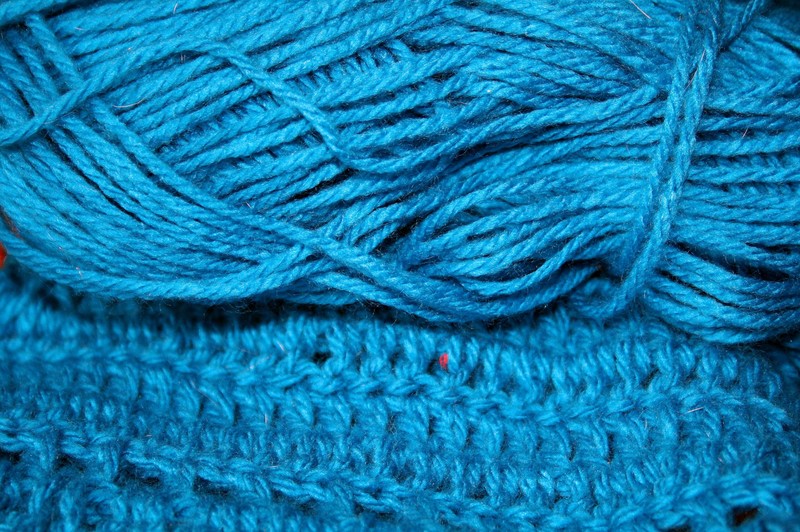If you are one of those people who wants a stylish blanket, there are some steps that will guide you on how to make a chenille blanket from scratch.

Chenille blankets are not just a simple type of blanket. It is one of the most fluffy, warm and comfortable ones that you can ever ask for.
Stick around to learn the process of making this without troubling yourself too much.
Materials Required On How To Make A Chenille Blanket
These blankets are comfortable and night-friendly, but unfortunately, they can be quite expensive.
Thankfully, you can get the same quality in a DIY chenille blanket as long as you know what you are doing.
The following is a list of your must-haves to make your chenille blanket.
- 1 yard of cotton (blanket backing). Make sure to have ½ to 1 inch extra for the foldings
- 4 pieces of flannel (1 yard cuts; colors and design of your choice)
- Masking tape
- ½ yard cotton fabric (for binding)
- Spray baste or basting needle and thread
- Chenille scissor
Note: Press all of the fabrics, but DO NOT wash beforehand.
Method #1. Using spray baste
- Step #1. Put the focus fabric on a flat surface facing down, then use the basting spray
- Step #2. After adding a basting spray, you can now lay the 1st flannel piece on top of the fabric and smooth the surface.
In this part, it is better to have someone accompany you. Do not use spray baste on this layer because it will be trimmed off.
- Step #3. Now, add the 3rd piece of flannel using spray baste, and smooth into place.
- Step #4. After these steps, you can now add the 4th and final flannel, then smooth it into place.
Method #2. Using basting needle and thread
- Step #1. Spread the cotton (backing fabric) on a large surface facing down.
- Step #2. After that, lay the flannel on top, at the right side part of the backing.
- Step #3. Smooth each layer before adding the next piece.
Once all the 5 layers are smoothened into place, place a long masking tape diagonally, across the blanket.
- Step #4. Using the basting thread and needle, baste the layers altogether.
You will have to baste using a big stich, followed by a little stitch.
- Step #5. From the last line, you will have to stitch at least 3 inches and baste it following the tape line.
- Step #6. Using your sewing machine with the guide attached, stitch along one side of your guideline, then remove the tape that you will finish after.
- Step #7. Using the stitch guidelines, continue stitching on the measure of ⅝ inches diagonally until the entire fabric has been stitched.
- Step #8. Using the chenille scissors, cut through the first 3 layers. Do not cut the 4th layer.
- Step #9. Once all the guidelines are cut, you need to start shaping your blanket into a square.
Do not do this until all lines are cut.
- Step #10. To square up the blanket, start by folding it in half and then use the folded line for a straight line, then trim each side.
Fold the opposite side and repeat. After that, make sure if your blanket has been squared up.
- Step #11. After doing those, you can now start with the binding.
Use your cotton fabric, cut it into 2.5” strips then connect it all to make a long one, fold it then press.
- Step #12. Attach the flannel side using a sewing machine.
You can either add embroidery or stamp to your preference, for additional design.
- Step #13. After completing all those steps, you can now wash your DIY chenille blanket.
Common Fabrics Used For Chenille Blankets
Chenille has different materials. Let’s narrow it down to the fabrics that can be used.
All of the following contain a unique characteristic that contributes to the beauty of a chenille blanket.
Cotton
This one is commonly used because of its breathable and soft attributes. It is also considered eco-friendly.
Polyester
This is commonly used in blankets and throws. It is a synthetic material that is more affordable than cotton and wool.
However, it can also be less durable.
Wool
Common chenille materials with this fabric are scarves, gloves and even shawls.
It is known to be expensive, but it is worth it since they are long-lasting.
Rayon
Also called “viscose”, rayon is a fabric that has a silky and smooth texture.
It is an eco-friendly material since it is sustainable from wood pulps. People go for this fabric because of its luminous appeal.
Conclusion
Wanting to have something is natural, but being able to make that thing is a rare experience.
A lot of people have been compromising to have their own comfy and fuzzy blanket, but their budget is slacked off.
For your convenience, here are the steps and the materials you’ll need on how to make a chenille blanket.
